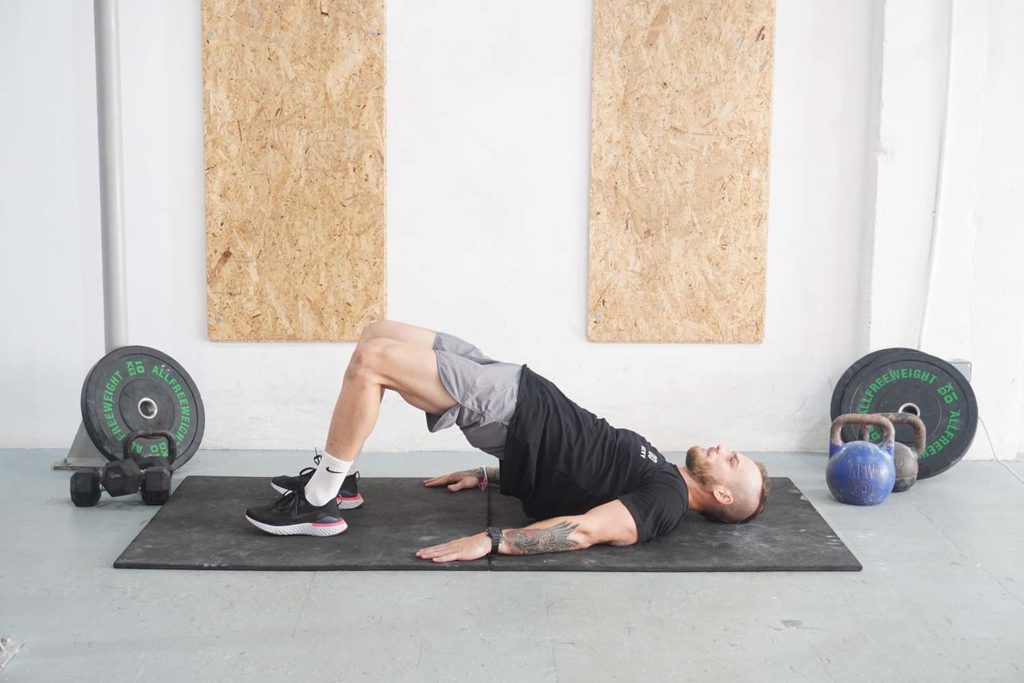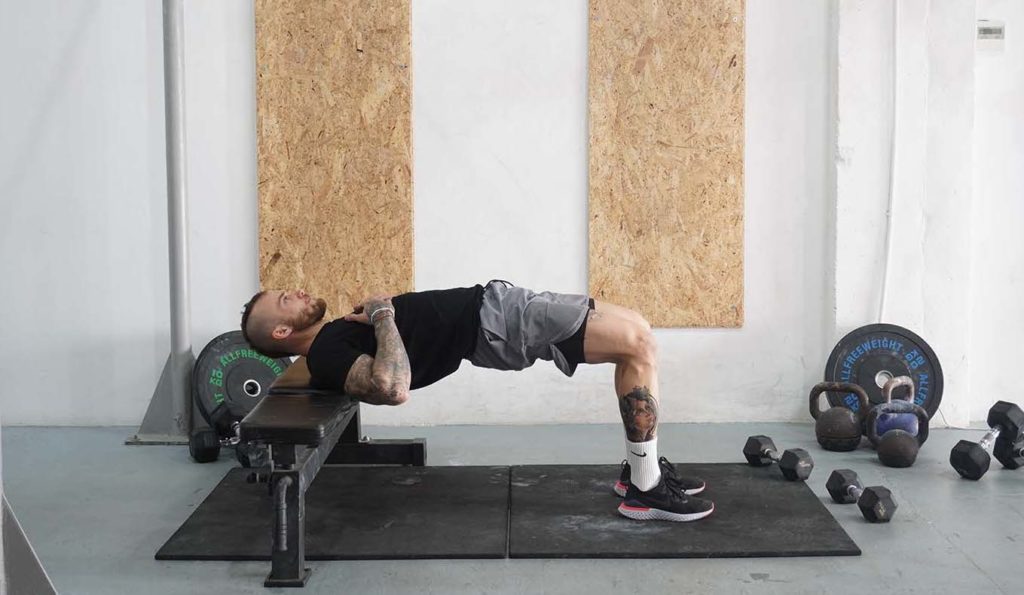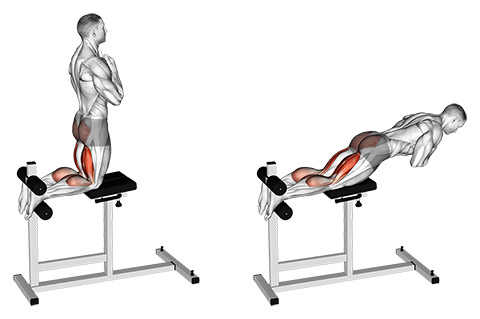The Benefit of the Glute Kickbacks on the Floor
Our glutes don’t receive nearly as much attention as they should. Instead, we focus on seemingly more important muscles, such as our quadriceps and hamstrings. But the glutes are the largest and most powerful muscle in the body. Developing them plays a huge role in our athleticism, whole-body strength, balance, posture, and much more. The best part is, we can start building them up with a simple exercise.
Glute kickbacks are the simplest and most effective exercises you can do to nearly isolate the gluteus muscle group. The movement is safe, simple to learn, and everyone can start doing it in the comfort of their home. You can also add glute kickbacks to your gym routine.
Unlike many exercises that train our glutes, kickbacks don’t stress other muscles in the body and don’t require much weight to cause a strong stimulus. The movement offers a good range of motion and puts our posterior muscles at a mechanical advantage.
How to do a Glute Kickback on the Floor
- Get down on all fours.
- Position your shoulders, elbows, and wrists in a straight line with your palms flat on the floor. Have your hands roughly shoulder-width apart.
- Bend your knees and hips at a 90-degree angle. Your knees should be directly underneath your hips.
- Straighten your back by pulling your shoulder blades back but avoid arching your lower back. Aim for a neutral spine.
- Engage your abs, take a breath, and shift your weight slightly on your left knee.
- Raise your right leg back by engaging your glute, and have it do all of the work. Keep your knee bent at a 90-degree angle.
- Raise the leg until your thigh is parallel to the floor and in line with your torso.
- Hold the top position and bring that leg to the starting position as you exhale.
- Once finished on one side, shift your weight slightly to the right, and do the same number of reps with your left leg.
What muscles do glute kickbacks on the floor activate?
The primary muscle group that works during glute kickbacks on the floor is the glute (buttocks). The muscle group consists of three parts: gluteus maximus, minimus, and medius. All three muscles activate during the movement, but our glute maximus and medius do most of the work.
The gluteus maximus is the largest of the three and is responsible mainly for the movement (1). The glute medius is smaller but assists during the exercise.
Our hamstrings also assist during glute kickbacks. The muscle group consists of three heads, all originate from the pelvis, cross the knee, and insert in the tibia or fibula (lower leg bones). The primary functions of our hamstrings relate to hip extension and knee flexion (2). The hamstrings primarily work to keep the knee flexed, but they also engage when we bring each leg back.
Proper Technique and Form
Glute kickbacks are easy to learn, but this doesn’t mean that technique is somehow irrelevant or less important. Doing the exercise with good form ensures optimal gluteal engagement, resulting in superior growth.
The most important tip to keep in mind when performing glute kickbacks is to do each repetition slowly and with control. Be mindful of your posterior muscles and ensure that your glutes work hard on every repetition. Adding a pause at the top position can help you learn to engage your glutes better.
You should also experiment with knee angle during kickbacks. We recommend doing the movement with your knees bent at 90 degrees, but you can also extend your knee as you bring your leg back. Doing so might lead to better gluteal activation for some people.
The last tip to keep in mind for glute kickbacks is to use a full range of motion on each repetition. Start with your knee pointing down and raise it until your thigh is parallel to the floor on each repetition.
Variations and Modifications of the Glute Kickback on Floor
1. Glute Kickbacks (Dumbbell)
The dumbbell version of the movement is good for keeping yourself challenged. Add extra weight by including a dumbbell once the bodyweight version gets too easy. Place the weight at the back of your knee and squeeze it with your thigh and calf muscle. Proceed to do repetitions as you usually would.
2. Standing Glute Kickbacks
The standing glute kickback is a neat variation of the floor version. The goal here is to place a looped resistance band over your thighs, just above your knees. You then have to extend one leg back as far as you can.
3. Glute Kickback Plank
If you’re looking to challenge yourself, the glute kickback plank is a great way to do so. Assume an elbow plank position and begin raising one leg toward the ceiling. Once finished, raise your opposite leg for the same number of repetitions.
Mistakes to Avoid
A common mistake relating to glute kickbacks is excessive arching of the lower back. Trainees would assume position but arch their lower back too much before they start doing the movement. Arching isn’t bad for muscular activation, but it can put unnecessary stress on the lower back, leading to discomfort. Avoid the mistake by keeping a neutral back.
Another mistake related to glute kickbacks is doing repetitions quickly and with poor control. For example, swinging the leg back, then letting it drop on the way down. The mistake leads to poor muscle activation, which reduces the effectiveness of the exercise. Aim to do each repetition slowly and with good control. Feel your glutes working hard on every repetition.
Cutting the range of motion short is another mistake to avoid. Trainees would start from the correct position but only kick their leg back halfway before lowering it. So, extend your legs back until your thighs are parallel to the floor.
The last mistake to avoid is letting your upper body turn soft. While primarily a glute exercise, the kickback involves the entire body. Bracing your core and keeping a rigid torso will make the movement more stable and effective.
Similar Exercises to the Glute Kickback on Floor
Glute Bridge

The glute bridge is similar to the kickback because both are assistance/isolation movements for the gluteal muscle group. Both activities are beginner-friendly, and you can do them at home with no equipment. The primary differences are the range of motion and movement pattern. Kickbacks depend on extending your legs back, where glute bridges require hip extension to train your posterior chain.
Hip Thrusts

The hip thrust is a similar movement to glute bridges. Both exercises have the same range of motion and movement pattern. The primary difference is, you would do hip thrusts with your upper back on a gym bench. In contrast, glute bridges have you lie on the floor. Thanks to this similarity, hip thrusts are also similar to the glute kickback. Both movements emphasize our glutes, leading to good growth.
Glute Ham Raise

The glute ham raise is a fantastic assistance exercise that works and develops our hamstrings, glutes, back, and overall core. Glute ham raises are similar to kickbacks on the floor because both movements train our posterior chain well, even if we don’t have access to external weights. The primary difference is that ham raises emphasize our hamstrings more, whereas kickbacks focus on our glutes (3).

